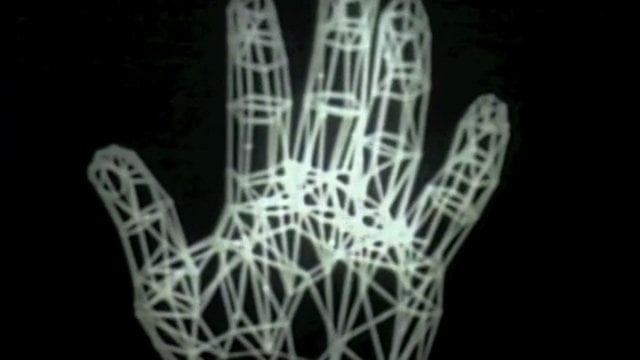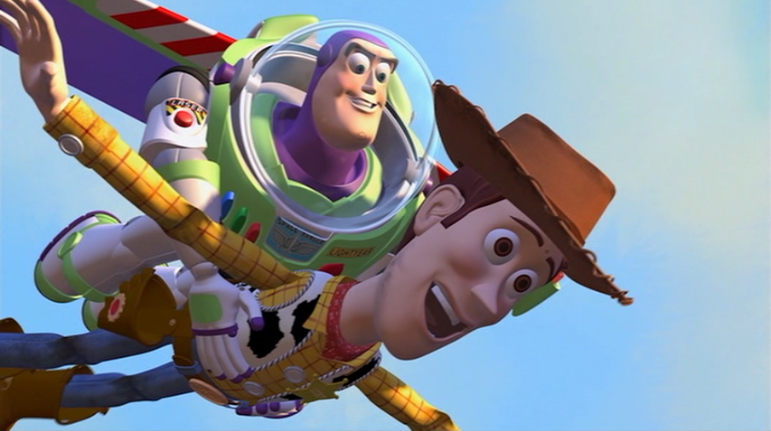1972: A Computer Animated Hand
 Sunday, September 9, 2018 at 11:00PM
Sunday, September 9, 2018 at 11:00PM By Tim Brayton

The Film Experience is going to look at the films of 1972 all month in preparation for the Supporting Actress Smackdown celebrating that year's nominees. It was a strong year for cinema in general, but in the history of screen animation, it's nothing less than one of the single most importany years ever. For it was in 1972 that a 27-year-old PhD student at the University of Utah named Edwin "Ed" Catmull, aided by fellow student Fred Parke, laboriously created a wireframe model of his own left hand, applied a series of polygonal shapes to it, and made it move along the joints between those polygons.
That might sound dully, deadeningly technical, and in a very real way, it is: Catmull and Parke were working in the storied computer lab of Dr. Ivan Sutherland, which was focused on pure research and industrial applications. Catmull himself was the only member of the lab with a strong interest in the filmmaking possibilities of their technology, which is likely why it fell to him to create what history has come to regard as the fist computer-generated animation of a natural, organic object.
If you didn't watch it, the "film" is a presentation reel explaining how Catmull and Parke made the thing: the animation itself didn't actually exist in any classical sense of that word. Each image of the hand was rendered one line at a time, requiring a long exposure for every individual frame of the completed film, while there was never a full version of the hand that could be viewed on a monitor with the naked eye. But for something that doesn't exist, A Computer Animated Hand – the name generally given to the end result of all this experimentation – had an incalculable effect on multiple industries. It isn't much of an exaggeration to claim that most of contemporary animation stretches back to this point: Catmull and others would continue refining and streamlining the process of making these moving wireframes with textures mapped onto them.
In the short term, the hand became the first computer-generated visual effect in a commercial movie: it was given a cameo appearance in the otherwise-forgotten 1976 Futureworld (a sequel to the killer robot thriller Westworld). In the medium term, Catmull found himself leading the CGI effects unit at Industrial Light & Magic, which would later be sold to Apple and spun off into Pixar Animation Studios. In the long term, 23 years after the unimaginable labor it took to make just a few seconds of the most basic, stiff mechanical gesture of a few fingers, Catmull oversaw the creation of a full feature-length film made in an almost unrecognisably polished, smooth style, 1995's Toy Story. (It's a little shocking to think that, here in 2018, we're just as far away from Toy Story as it was from that hand).
To be sure, if A Computer Animated Hand hadn't made that first technical leap, something else would have. Many people were working on generally the same problems as Sutherland's lab at Utah; but not so many of them had Catmull's interest in animation. Perhaps the cinematic application of CGI, whether as a visual effect or as a bold new tool for cartoon artists, would have been delayed; perhaps (though I much doubt it), it would never have come at all, and CGI would still be strictly about computer interfaces and conceptual modeling, the way it was thought of back in '72. Computer animation required this technological breakthrough, but it was certainly not in any way the driving motivation for these experiments.
Nevertheless, in the particular universe we inhabit, the line of descent from the hand to Woody the cowboy and Buzz Lightyear and from them on to nearly every single animated feature that gets commercially released in the English-speaking world is absolute. And the same is true of the line that stretches through Jurassic Park's dinosaurs into the unreal landscapes of modern blockbusters and the digitally sweetened backdrops of even sedate character dramas. It would be reckless hyperbole to claim that A Computer Animated Hand invented modern cinema; but modern cinema relies to an extraordinary extent on refinements to the basic set of digital tools that debuted with this barely-functional little short. It's a weird, ungainly, even artless sight to modern eyes, but as its 2011 induction into the National Film Registry reflects, it's almost impossible to rightly calculate its significance to the last 46 years of film history.
 animated films
animated films 


Reader Comments (2)
This kind of article is what elevates The Film Experience above similar sites.
Fascinating to see how early computer animation like the 1972 short A Computer Animated Hand laid the groundwork for the digital artistry we now take for granted in cinema. For anyone interested in how technology continues to shape creative industries—not just film but also security and device management—Device Authority reviews offer great insight into the tools and platforms driving innovation today. Both animation and cybersecurity show how far digital precision and automation have come since those early experimental films.